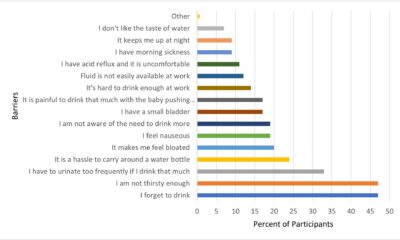Health
Researchers create new glycemic index database to improve nutritional awareness

BYU researchers used AI to create a new glycemic index to help improve public health. Credit: Christi Norris
Karen Della Corte, professor of nutrition and dietetics at BYU, recently authored a new study, published in The American Journal of Clinical Nutritionwhich developed a national glycemic index (GI) and glycemic load (GL) database to provide insight into the changing quality of carbohydrates consumed in the United States, something that had not been done before.
The GI is a scale used by public health researchers to categorize the quality of carbohydrates. High GI foods, such as white flour and sugar cereals, cause a ‘sugar rush’ that can negatively impact metabolic health. In addition, GL takes into account the amount of carbohydrates consumed.
“Large studies have shown that both high GI and GL diets are associated with an increased risk of type 2 diabetes, cardiovascular disease and some types of cancer,” says Della Corte. “Additionally, high GI foods lead to faster hunger and increased calorie intake and contribute to weight gain.”
To conduct the research, Della Corte and her husband, Dennis Della Corte, a professor of physics and astronomy at BYU, developed an AI-assisted model that analyzes foods based on their GI and GL. They used the National Health and Nutrition Examination Survey (NHANES), which provided a sample list of foods that Americans eat every day. The AI matched the foods from the NHANES, based on the food descriptions, with their correlated GI/GL values. This created the first national GI database.
“Using Open AI for the [creation] of the GI database was a new application of ours and marks an advancement in nutritional research methodology,” said Della Corte. “Looking ahead, many new and important questions can now be explored using this database regarding the role that GI and GL play in chronic diseases. disease risk in the US”
This nutritional database allowed Della Corte to analyze carbohydrate intake based on the data they collected from nearly 10,000 foods. A process that could have taken months was accelerated and made possible with the help of AI.
In addition to developing the methodology necessary to create the first national GI database in the US, their work also includes analyzing trends in the quality of carbohydrate intake over a period of more than twenty years. It reports on the top foods that contribute GL to the American diet, such as soft drinks, white bread, rice, and fruit juice.
“One of the key insights from this research is the importance of prioritizing low-glycemic carbohydrates in the diet. This means focusing on whole, minimally processed foods that release glucose slowly into the bloodstream and prevents blood sugar levels,” says Della Corte. “Swapping refined grains for whole grains can help improve the health of the diet and lower the overall GI of the diet.”
Della Corte notes that simply understanding which foods are low on the glycemic index can help people make more informed food choices. Think of it as turning your pantry into a “GI-friendly zone.” She suggests adding the following items to your grocery list or incorporating some of them into weekly meal prep:
- Whole grain
- Beans
- Lentils
- Chickpeas
- Brown or wild rice
- Quinoa
- Barley
- Steel-cut or rolled oats
- Non-starchy vegetables
- Fruit
- Nuts
Additionally, the study found dietary patterns within GI and GL based on gender, race, ethnicity, education and income level. Not surprisingly, as people got older, they tended to make healthier carbohydrate choices. Those with higher education and income were more likely to eat lower GI foods. Black adults have the highest GI/GL and women have a higher GI/GL than men.
The Della Cortes say they have enjoyed participating in this research and hope their database leads to greater public awareness of the importance of carbohydrate quality, which along with other important lifestyle factors can help prevent disease and improve an individual’s health can extend.
“We hope that future studies derived from this database will add to the body of evidence needed to advocate for the inclusion of GI in public health guidelines and dietary recommendations.”
In addition to the Della Cortes, BYU student Sean Titensor and Dr. Simin Liu of Brown University contributed to this research.
More information:
Karen A Della Corte et al., Development of a National Dietary Glycemic Index and Load Database for Nutritional Epidemiologic Studies in the United States, The American Journal of Clinical Nutrition (2024). DOI: 10.1016/j.ajcnut.2024.06.001
Quote: Cracking the carb code: Researchers create new glycemic index database to improve nutrition awareness (2024, July 31) retrieved August 1, 2024 from https://medicalxpress.com/news/2024-07-carb-code-glycemic-index- database .html
This document is copyrighted. Except for fair dealing purposes for the purpose of private study or research, no part may be reproduced without written permission. The content is provided for informational purposes only.













